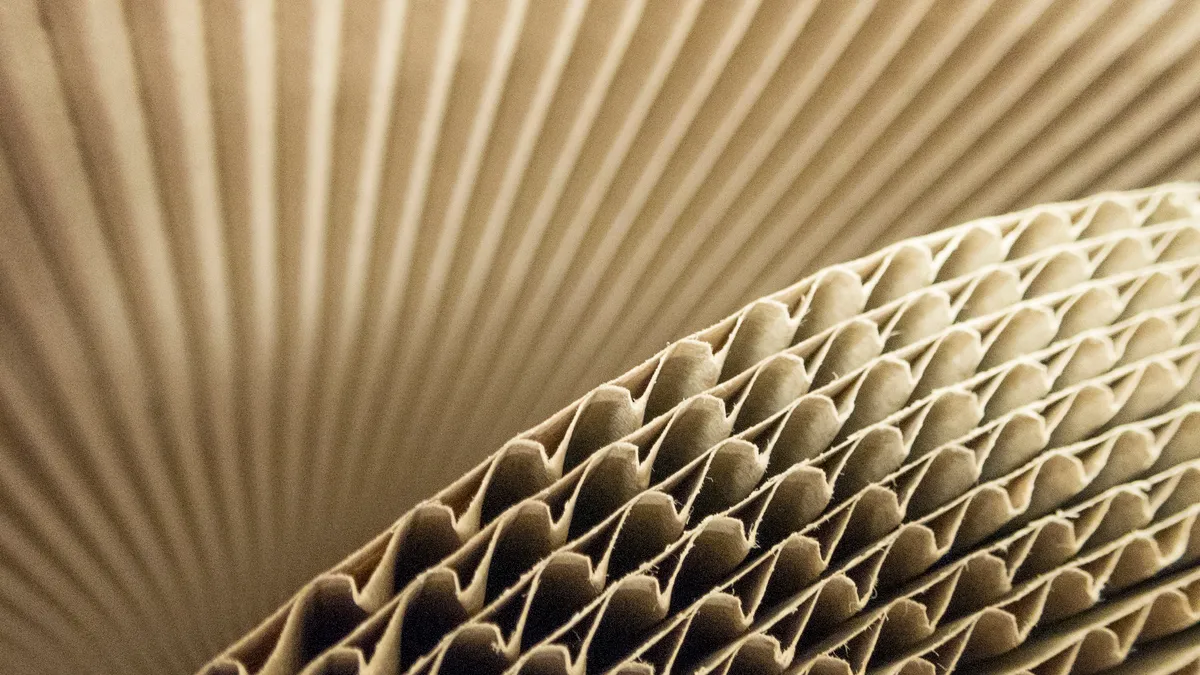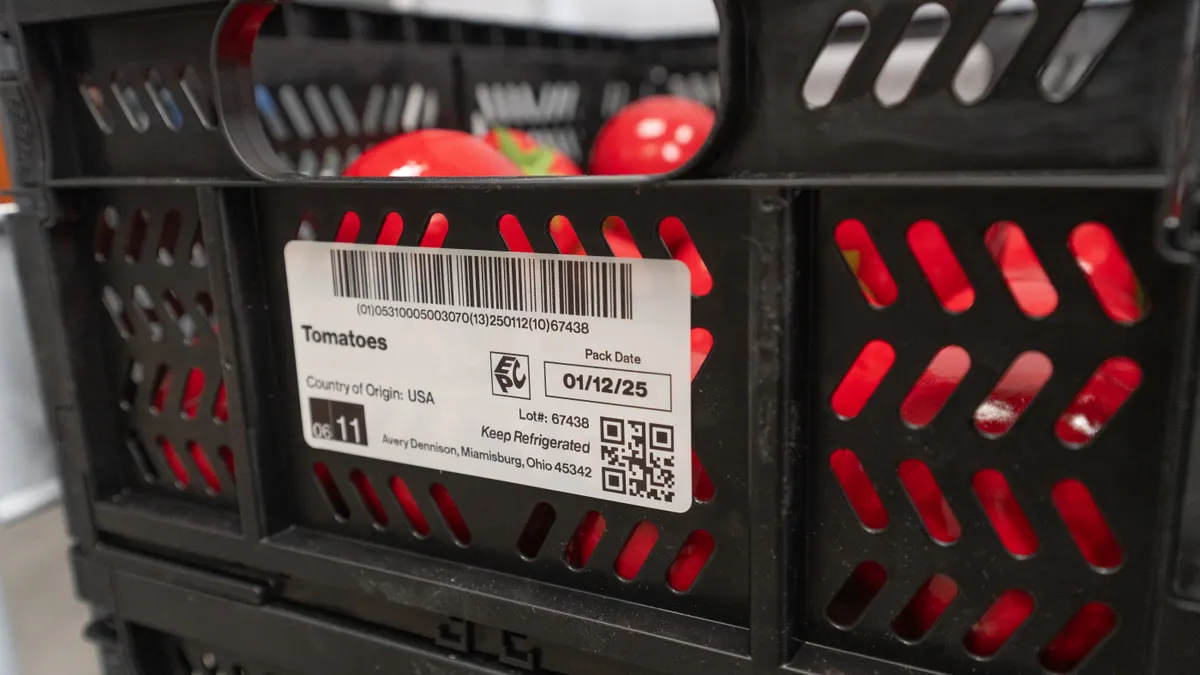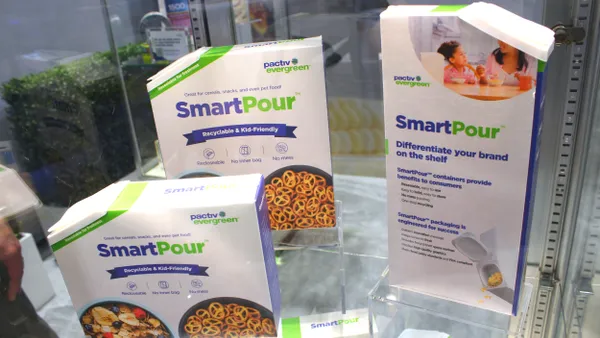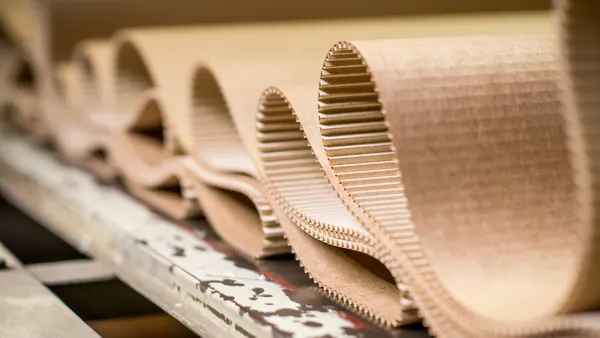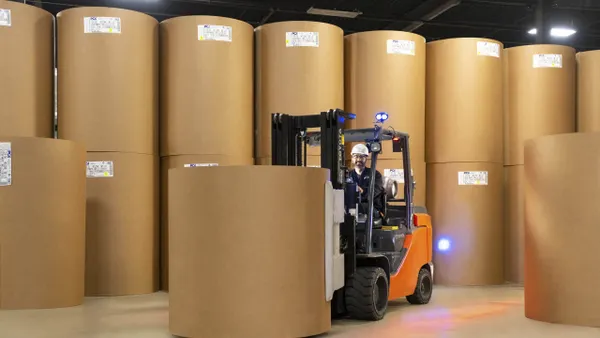After a lull, the fiber board pricing frenzy that infused controversy into the industry in 2024 could be poised to spill over into 2025.
Packaging Corporation of America on Wednesday announced increases of $70 per ton for linerboard and $90 per ton for medium that will take effect Jan. 1, analysts reported. Now, analysts are raising questions about whether the timing is optimal and whether other major board producers will follow suit.
Twice in 2024, a cluster effect occurred when one or two large producers issued price increases and others quickly jumped on the bandwagon. With its autumn 2023 announcement, PCA led the first round of increases, to take effect Jan. 1, 2024, pointed out Michael Roxland, senior paper and packaging analyst at Truist Securities, in a Tuesday memo to investors about PCA’s new price bumps. The January actions marked the industry’s first linerboard hikes in nearly two years.
Roxland suggested stronger demand is the likely driver for the new hike, citing PCA’s 12.9% year-over-year increase in box shipments in the recent quarter. Echoing that, a Tuesday letter from Green Markets, a Bloomberg company, said that PCA “outperformed the industry by more than 12 percentage points and may be rationalizing this increase as demand oriented.”
However, Roxland also said that the “increase is earlier and greater in size than we had expected,” considering Truist’s forecast had anticipated a $50 per ton increase taking effect in March.
Despite demand improvements, PCA’s timing is curious considering industrywide data only shows a slight demand uptick and overall shipments were pretty flat in the third quarter, said Ryan Fox, corrugated packaging market analyst at Bloomberg Intelligence. He noted that the new $70 and $90 hikes amount to an 11.5% price increase. And concurrently, competitors have decreased production; for instance, International Paper took 500,000 tons of economic downtime, Fox said.
“If PCA is experiencing fullness from a demand standpoint, they can raise their prices. IP is not full. Smurfit Westrock is not full. There are so many other people that are not full,” Fox said. “Broadly speaking, there is an oversupply and box prices are on a downward trajectory, by our analysis.”
In October, BofA Securities signaled that the industry was in an early stage of expansion after a two-year packaging recession. But last week’s BofA Box Survey noted a deceleration in growth expectations. Still, “respondents appear more affirmed in their view that containerboard prices should head higher from here,” with most expecting the next increase in Q1 2025, wrote George Staphos, BofA Securities research analyst.
PCA executives detailed on their last two earnings calls how their price increases from earlier this year still were being implemented, a process they said typically takes 90 days each time.
During the July 24 Q2 earnings call, CEO Mark Kowlzan and Tom Hassfurther, executive vice president for corrugated products, both said that PCA’s February price increases were negatively affected by Fastmarkets RISI’s lower price reports. That means the index did not show markets accepting the full price increases that PCA announced. Certain customer contracts across the industry include references to this index’s prices to trigger contract changes.
“How that [lower index price report] impacts contract triggers with certain customers would initially delay the timing of realizing the increases,” Kowlzan said on the call.
Fastmarkets RISI not recognizing companies’ full price hikes this year has been a point of contention. PCA executives are among the many who expressed dissatisfaction with the index on earnings calls. Several suggested they were exploring options to move away from that model. And Graphic Packaging International executives announced on their most recent earnings call, Oct. 29, that the company would eliminate third-party pricing indexes as a factor in new sales contracts with paperboard customers starting in Q1 2025.
Analysts are keeping an eye on whether PCA’s competitors announce their own January increases in the coming days. Roxland explained after Cascades’ third announced 2024 price increase didn’t gain traction in October that the increase “needs the support of the larger integrated players” to take hold.
“Ultimately, this is about box prices, and are box buyers willing to pay more money? Well, we saw a lot of reaction from the marketplace earlier this year when there was a second price increase,” Fox said. “We could expect another round of that after this — that's not an unreasonable expectation.”
He described fiber price fluctuations over time as a “roller coaster ride,” and said, “The question is, is now the right time” for another price increase?
That can’t be effectively answered until observing how the marketplace responds in the new year.



